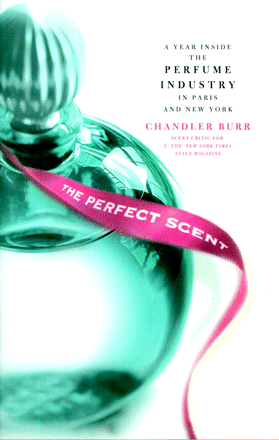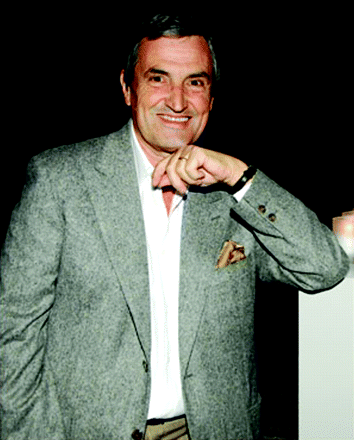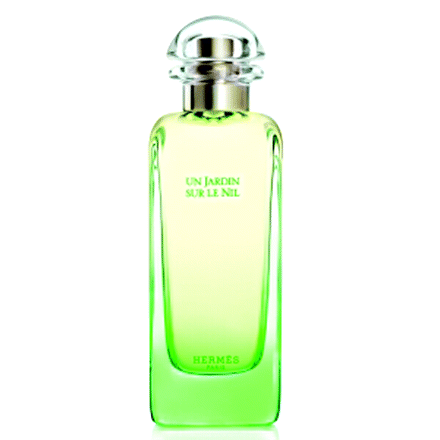Smell You Later: Behind the Curtains of the Perfume Industry
- Dan Collinge, BA, Senior Editorial Coordinator

The Perfect Scent: A Year Behind the Scenes of the Perfume Industry in Paris and New York, Chandler Burr, New York: Henry Holt & Company, Inc. 336 pages. $25.00 ISBN-13: 9780805080377
Have you ever wondered how perfumes are made? Or how the fashion industry works? Or how to say things in French? Or what Sarah Jessica Parker likes to sniff? If so or even if not, whatever allow me to recommend Chandler Burr’s The Perfect Scent: A Year Inside the Perfume Industry in Paris and New York. Burr, the scent critic for T: The New York Times Style Magazine, has, uh, spent a year inside the perfume industry in Paris and New York, closely following the launch of French luxury house Hermès’s scent Un Jardin sur le Nil and Coty’s partnership with Sex and the City star Parker on the Lovely brand. Burr’s writing is engaging and humorous; he possesses a terrific eye for detail and (apparently) a very discerning nose. All of this makes The Perfect Scent a pretty enjoyable read, even for someone who wouldn’t know the difference between Chanel No. 5 and Speed Stick if they walked up and applied themselves directly to his forehead.

The book grew out of two articles one for the Times, the other for The New Yorker and so it is split roughly in half. Chapters alternate between accounts of Hermès and Coty. There are two protagonists (three, really, because Burr writes himself into a lot of the story): Parker and Jean-Claude Ellena, Hermès’s in-house perfumer.
Much of the action follows Ellena in his long and often frustrating attempt to develop the perfect scent for Hermès. Burr shares a similar obsession, which is probably not a bad thing considering his line of work. In fact, Burr says the chapters in his book are “recall[ed] by their smells,” the two stories “mapped ... in scent.” Smells are vividly depicted. Take the following: “You turn a corner, you’re enveloped out of nowhere in an olfactory hologram of warm steamed rice, or spectral sour milk, or acrid, cloying pot, or overheated cedar mulch... with a sweaty genitals angle, or some greasy unidentifiable evil smell that leaps on you, mugs you, and vanishes inexplicably. . . .” The only way, maybe, to top Burr’s description would be to print up some Scratch and Sniff books. (Note to Henry Holt & Co.: A Scratch and Sniff book would be awesome!)
Anyway, what I’m saying is, the guy’s funny. He’s also remarkably insightful in his observations of French and American culture. The journalist in Burr snaps up a few great quotes. French perfumers sit around muttering things like “Perfume is an adjunctive sense ... Time is also a sensual element, a sort of action at a distance which inscribes itself in memory.” Conversely, to the French, “American creatives are indistinguishable from American accountants.”
Elsewhere, Burr refers to perfumers as “talking Labradors.” His humor can be quite cutting at times. In lampooning the PR wing of a French perfume company, Burr advertises a fake scent: “Cleopatra wore this, it has notes of distilled wild all-natural Martian fungus harvested by French virgins on the third moon of Pluto.” I don’t know about you, but I’m sold. His analysis of the perfume industry goes something like this: Behind-the-scenes perfumers create scents and submit briefs to perfume companies who pick the winner, manufacture the stuff, design a pretty bottle, and then disseminate press releases that talk about Giorgio Armani’s or Ralph Lauren’s latest creations (when in fact neither designer knows the first thing about making perfumes). The business, however, is based on the illusion that these guys are coming up with their own scents. Meanwhile, nobody has any written contracts with anybody else, so business partnerships are contingent upon keeping formulas top secret. “What this means,” Burr writes, “is that these are twenty-first-century companies operating under medieval business practices, the emperor has no clothes, everyone knows it, and no one will admit it.”
Burr’s background makes him uniquely qualified for a project like this. A former science journalist for The Atlantic with a Master’s degree in international economics, he understands the chemistry behind the fragrances as well as the wackiness of the business models. More importantly, he can dumb it down for the rest of us. Most of the science is clumped together. It doesn’t dominate or interrupt the flow of the book; on the other hand, it’s nice to refer to occasionally. Ready to make your own perfume? The formula’s on page 137. Sprinkle in a little ambrettolide, some geranium bourbon, a dash of tuberose base, and thirty other things that are harder to spell, and there you have it! There’s also a four-page blueprint of Turkish rose absolute for your viewing pleasure. But the technical bits are intriguing, honestly. Not surprisingly, Burr tells us, most of the tinkering around with new scents is done on computer screens these days. Your bottle of Tom Cruise: Insanity (or whatever) probably grew up on a hard drive in a cubicle somewhere. Speaking of celebrities, he’s also managed to get his hands on Paris Hilton’s actual contract with Parlux in which she effectively cedes all the creative control for the product to the company. Fascinating stuff.
I could, however, have done with a little more discussion of environmental concerns. To his credit, Burr does land briefly upon the subject. Perfumers are increasingly going in the direction of synthetic materials, which is good, he argues, because it means you can create fragrances that smell like Brazilian rosewood trees without invading the rainforest and cutting the things down, or because you can combine tert-butyl halides with TNT (the stuff that blows up) and create something that smells exactly like Tonquin musk. As a bonus, you don’t have to shoot the Tibetan musk deer that naturally secretes it. But elsewhere, he writes about a botanist contracted by a French company to explore the jungles of Vietnam in search of new materials. Disturbingly, he never asks at what cost to the forest this project is undertaken. I have a few other minor complaints. The slew of brand names, companies, and the large cast of characters can be baffling at times. Also, the humor occasionally crosses the line of taste. In one example, he describes Paris smoking lounges as “filthy little Dachau gas chambers.” And then there’s the matter of all the French. There’s a lot of it in the book. Beaucoup. French sentences followed by their English translations, a nice touch at first, become really repetitive.
But, okay, my carping shouldn’t keep you from reading the book. I enjoyed it, with a nose as sensitive as a brick and the fashion sense of a yak. Pick it up, give it a good sniff, and let Burr entertain you with stories of celebrities hard at “work” inhaling submitted fragrances in the boardroom, of cigarette-guzzling fashion critics in Prada sunglasses sampling perfumes while wreathed in smoke, and of perfumers’ concerted efforts to distill the essence of pure civet cat anus.

On second thought, never mind about that Scratch and Sniff.
- © American Society for Pharmacology and Experimental Theraputics 2008





